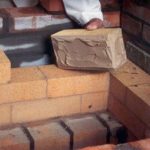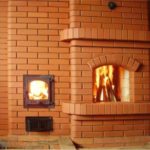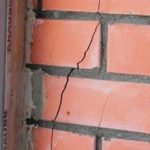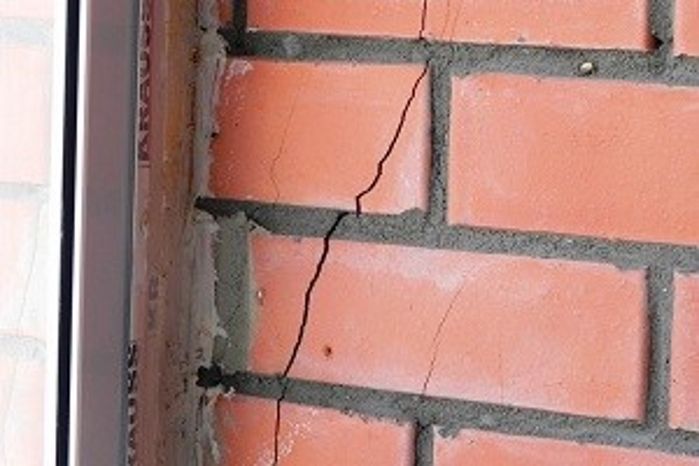Proportions of clay mortar for laying stoves
If you are planning to make a stove yourself, you need to take into account a lot of factors that affect the quality of the result. An important one is the mortar - it is used to hold all the parts of the structure together. And it is he who is responsible for how long the device will be used. To know what points need to be taken into account for this, the presented article was written.
The content of the article
Composition of clay mortar for laying stoves
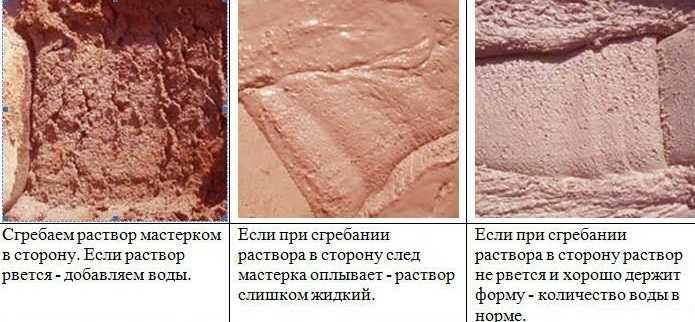 How to make clay mortar for laying a stove, how to knead the clay correctly? Let's start with the most important ingredient, on which the whole mixture is based. Thanks to it, the starting material is provided with both viscosity and stability.
How to make clay mortar for laying a stove, how to knead the clay correctly? Let's start with the most important ingredient, on which the whole mixture is based. Thanks to it, the starting material is provided with both viscosity and stability.
However, it is worth remembering that not all types of clay are suitable for this task. For example, those that have impurities are not suitable for use. They are pre-prepared and tested using various methods.
It will take a lot of time and effort to remove all unnecessary substances from the product. Clay is also conventionally divided according to classification depending on its fat content: low, medium and high.
As for the next component of the clay mortar for laying stoves, it is sand. What it has in common with the previous material for carrying out the work is the elimination of foreign impurities.If it is possible to extract the material yourself, this frees you from the duty of purification. It is important that the sand consists of homogeneous grains.
REFERENCE! The purest sand can be found on the river bank.
How to prepare clay mortar for laying a stove? The final component is water. The main thing here is: do not believe rumors that any liquid is suitable for use.
On the contrary, the most suitable option is drinking and purified water. It is best if it does not contain foreign microorganisms and other unnecessary substances.
Clay selection rules
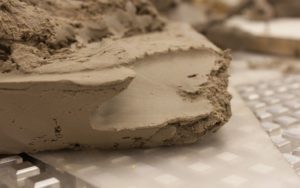 How to make a mortar for laying a brick stove, the proportions of which are clearly established? First you need to determine the fat content of the mortar for laying a brick oven. There are several ways to do this:
How to make a mortar for laying a brick stove, the proportions of which are clearly established? First you need to determine the fat content of the mortar for laying a brick oven. There are several ways to do this:
- You need to stock up on clay (0.5 liters). A little liquid is poured into it and the dough is kneaded. Then you should twist small balls with a diameter of 100 mm. The product should dry within 2 days. The substance is greasy if it becomes damaged. But it may be that there are no formations, and the part is fragile. This indicates that the fat content is low.
- To check, use another method using a paddle. To do this, you need to mix the liquid with 2 liters of clay and stir so that there are no lumps. Next we define the index. If the mixture sticks, then it is high. Therefore, when the oar is coated with a thin layer, the mixture has a low index.
- And the most common test option is by making flagella. Mix the ingredients in 0.5 liters of water. After which you can start rolling out the parts. Their thickness should not exceed 15 mm, and their length should not exceed 150.If they stretch smoothly and bend without cracks, then the material is too greasy. The mass should break off at the moment when the length is at least 15–20 percent.
How to prepare a solution correctly: proportions of sand and clay
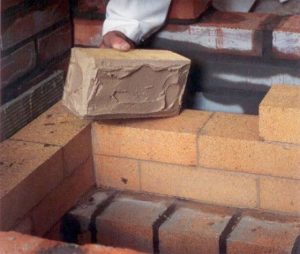 How to prepare mortar for laying a stove? After determining the desired option, it is advisable to immediately begin the main process. The ratio of ingredients will directly depend on the level of fat content.
How to prepare mortar for laying a stove? After determining the desired option, it is advisable to immediately begin the main process. The ratio of ingredients will directly depend on the level of fat content.
How to prepare clay for laying a stove? Of course, the ideal option would be a 1:1 proportion of clay and sand for laying stoves, because that is when a plastic solution is obtained. As for adding liquid, it's 1/4.
ATTENTION! If you cannot achieve the desired result, it is advisable to add 1 kilogram of cement per 10 kg of clay or salt (proportions of 150 grams per 10 kg, respectively). If the clay mass is too greasy, then it is recommended to add sand up to one and a half times.
Checking the solution for quality
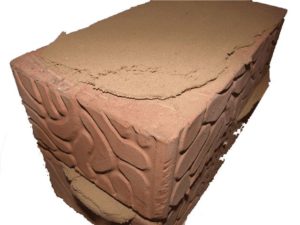 For testing, special methods have been developed that allow the master to determine how good his invention is. Let's look at each of them:
For testing, special methods have been developed that allow the master to determine how good his invention is. Let's look at each of them:
- Visually. You need to roll out the resulting mass into a flat cake with a thickness of 25 millimeters. Once it dries, there should be no damage.
- By deliberately creating stressful situations. To check, you need to wait until the pre-made ball dries under natural conditions. Then you need to climb onto a high structure and throw material from it. Upon inspection, the product should not fall apart.
- The next method will be similar to the previous one. The finished element is thrown against a wall or floor with force.If the formed ball breaks, the material is fragile.
So, using certain methods, you can independently determine how good the resulting material is.

